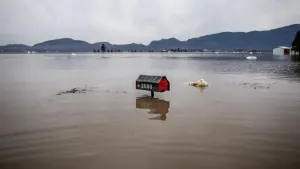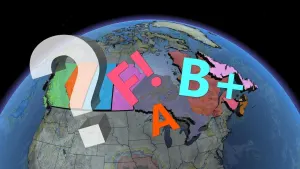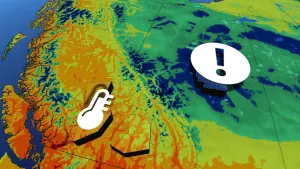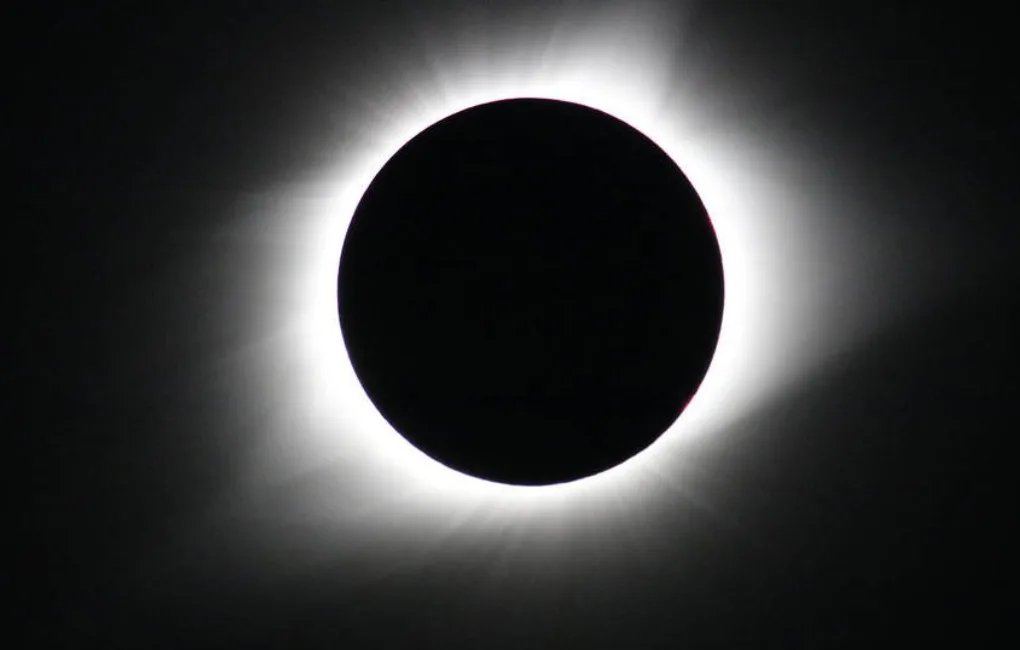
Canada's next Total Solar Eclipse is two years from today. Are you ready?
It's a good time to start planning for this long-awaited event!
On April 8, 2024, the Sun, Earth, and the Moon will line up perfectly to produce the next total solar eclipse visible from Canada. With the Moon's shadow tracing a narrow path across the eastern half of country on that day, here is what to expect and where to go for the best view of this spectacular celestial event.
We were treated to a fantastic sight on August 21, 2017. A total solar eclipse — dubbed The Great American Eclipse — was visible along a path stretching across the United States from Oregon to South Carolina. At the time, a team from The Weather Network travelled to a point along the eclipse's path of totality to livestream the entire event for the audience back home.
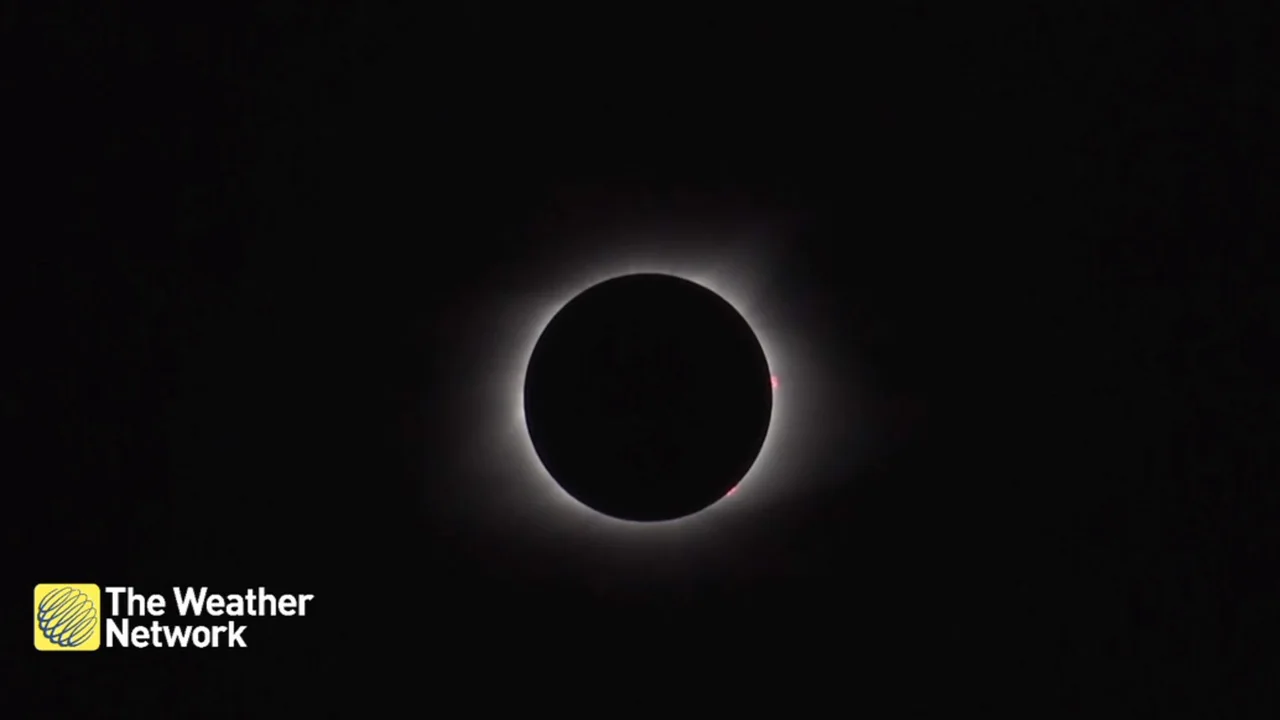
Shown here is the solar corona, the Sun's intensely hot atmosphere, visible only at this moment of totality as the Moon completely blocks the Sun. This image was captured on August 21, 2017, Total Solar Eclipse, from Silver Point, Tennessee, during the Weather Network Livestream hosted by Mark Robinson, George Kourounis and Scott Sutherland.
However, skywatchers across Canada that went outside to witness it for themselves were not able to see this same view. Instead, only a partial eclipse was visible. This is because the Moon only blocked as much as 90 per cent of the Sun when viewed from the west and around 50-70 per cent of the Sun for viewers in the east.
Two years from today, though, millions of Canadians are in for a treat!
During the next total solar eclipse visible from this part of the world, on April 8, 2024, the Moon's shadow will trace a path from Mexico to Newfoundland.

As shown above, the path of totality passes through the northern shores of Lake Erie, the Niagara Peninsula, southeastern Ontario, southern Quebec, central New Brunswick, the western half of Prince Edward Island, and central Newfoundland. From anywhere within that path, as long as the skies are reasonably clear, skywatchers will be able to see the Moon completely block the Sun for up to 3 minutes and 40 seconds. During that time, there's the opportunity (if you're careful) to catch a glimpse at the solar corona!
Viewers outside of that 180-kilometre-wide path will only see a partial eclipse. The farther away from the path of totality you are, the less the Moon will cover the Sun from your vantage point.
Still, those living in population centers that lie just outside of the path of totality in those regions are within easy driving distance to reach it.
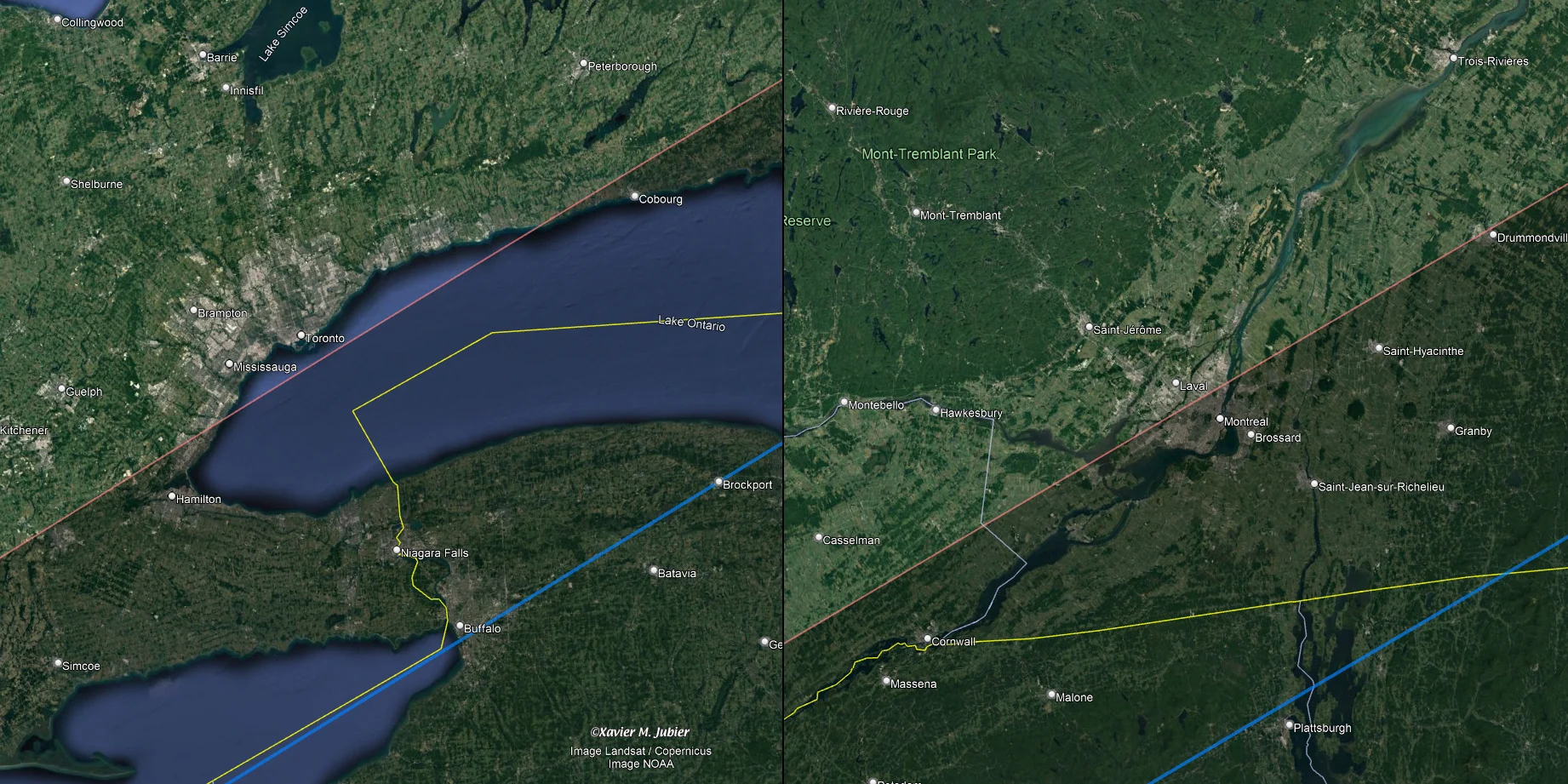
The path of totality of the April 8, 2024, total solar eclipse passes just to the south of the Greater Toronto Area, and the northern edge of the path passes directly through Montreal. Credit: Xavier M. Javier/Google/Scott Sutherland
As shown in the image above, the eclipse path of totality completely misses the city of Toronto. However, those living in the area can still see the total eclipse by heading west into Burlington, Hamilton, or the Niagara Peninsula, or by going east as far as Cobourg. In Montreal, the city's southern half is within the path of totality, but the northern half is just outside it. So, for some, just moving down the block could significantly improve their view.
The weather will be an essential factor in determining who gets to see the eclipse. Even an hour of overcast skies can ruin the show.
Forecasting what the sky conditions will be like, 2 years from now, is impossible. However, looking at the past can give us an idea of what things might be like.
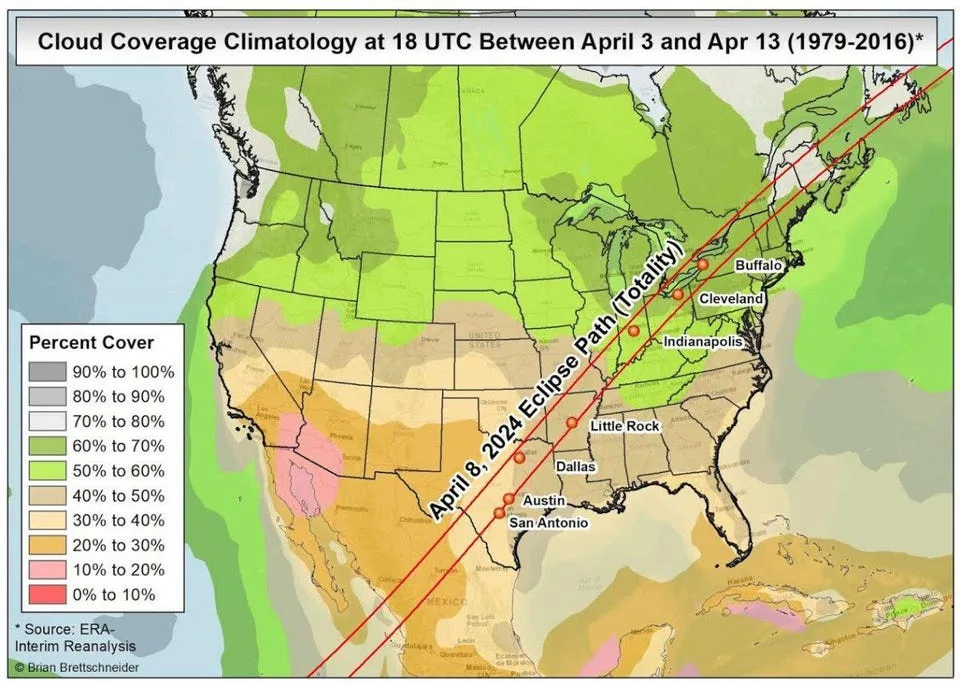
This cloud climatology map plots the average cloud conditions in early April, over the 37 years from 1979-2016. Credit: Brian Brettschneider, used with permission
Climatologist Brian Brettschneider posted the above map just one day after the August 21, 2017, solar eclipse. It is not intended to be an accurate weather forecast map. It simply shows what sky conditions have typically been like in early April. Across southern Ontario and Quebec, Nova Scotia and Prince Edward Island, there's usually about 60-70 per cent cloud cover. For New Brunswick and Newfoundland, it's more like 70-80 per cent cloud. That's not great news for Canadians who want to see the eclipse. However, we will have much more accurate forecasts in the days just before the eclipse.
HOW TO PREPARE
It's still two years away, so there's plenty of time to get ready.
One thing you can do early for this eclipse is to ensure that you have the proper eye protection, such as Mylar eclipse glasses. They are usually just thin Mylar 'lenses' with cardstock frames — simple but very safe and effective. If you still have the ones you got for the 2017 eclipse, give them a thorough inspection, looking for any scratches or holes in the Mylar. If you see any light passing through them when not looking directly at the Sun, discard them and get a new pair.
Telescope and camera companies sell special filters to place over the end of your telescope or over the camera lens. One thing to avoid is using welding glass, as only very specific types are adequately rated for safely viewing the Sun.
Another thing you can do is to plan where you will go to see the eclipse. It will take place on a Monday, and there's a good chance that the highways will be busy that day, with people driving to their own preferred viewing spot. So, plan your location and your route well in advance.
Also, keep watching for updates on the event, next year, and especially in the weeks and days just before the eclipse.







